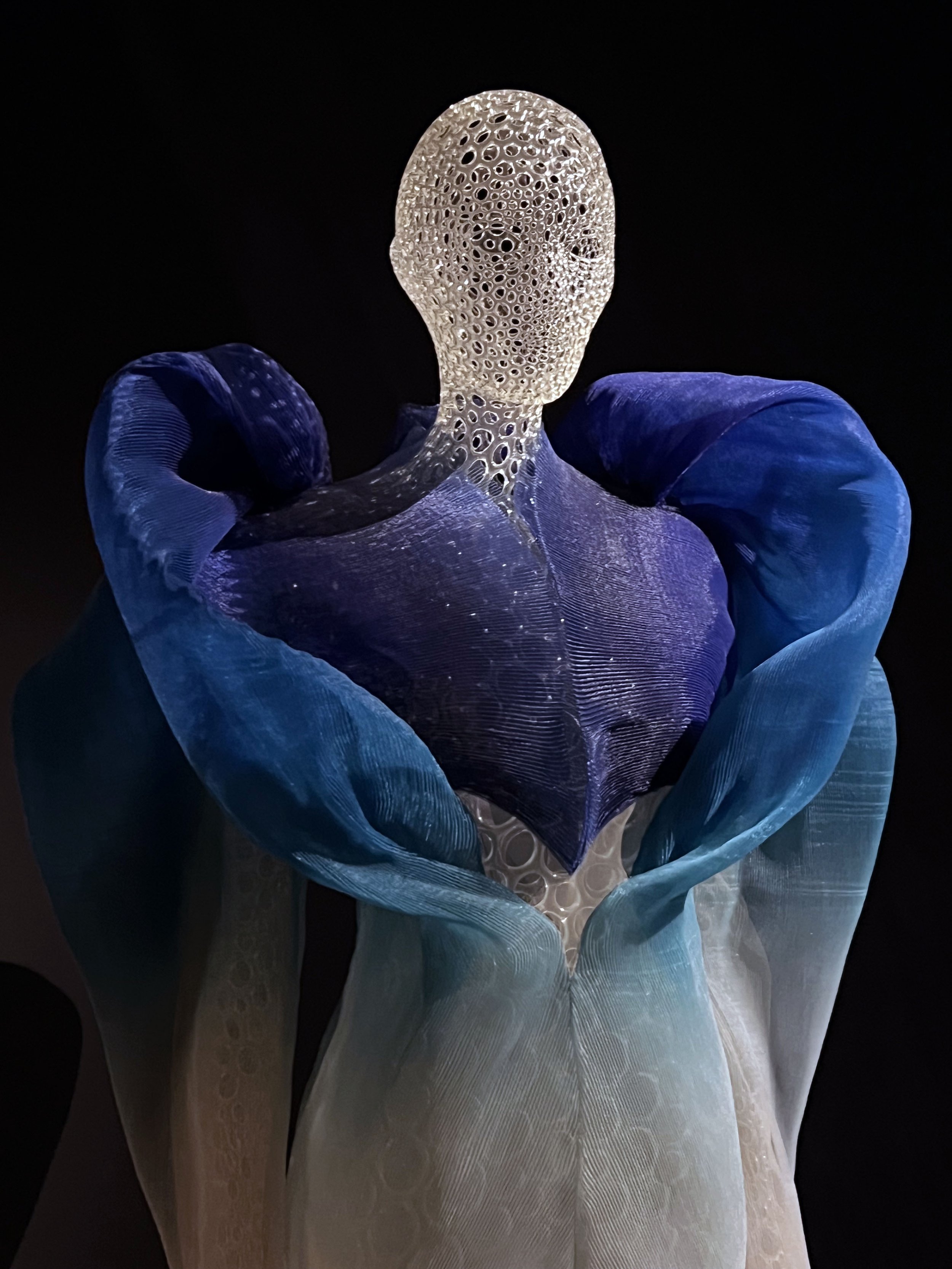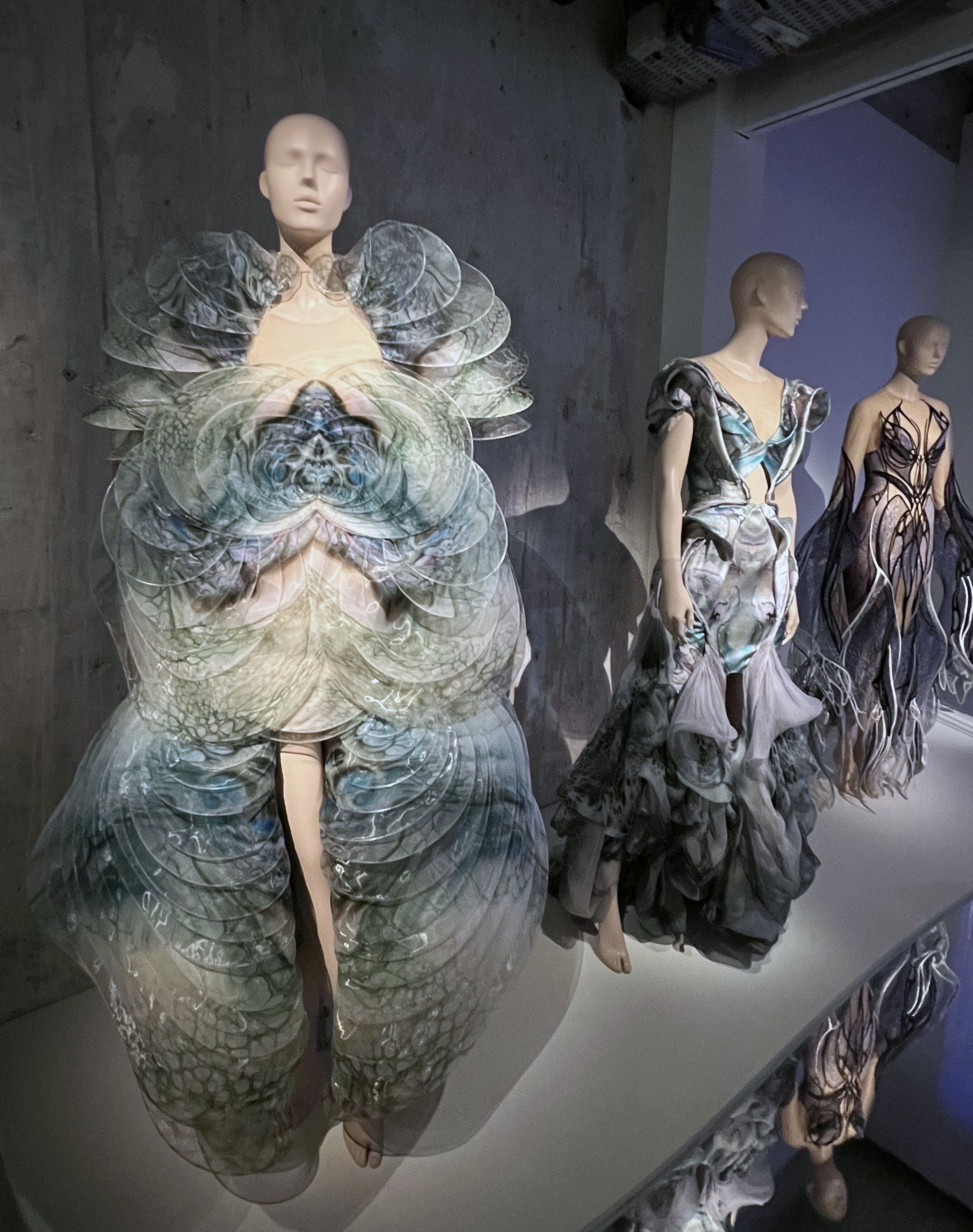Iris van Herpen is - in my opinion - one of the most fascinating fashion designers working today. She crosses the line between what is fashion and what is art better than anyone I know.
When I was recently in Paris for Deco Off - although working day and night - I was able to sneak away to see a retrospective of her works in person and found them to be so inspiring I couldn’t help but share a bit more about this designer and her work!
van Herpen was born in Wamel, a village in The Netherlands. After graduating from ArtEZ University of the Arts in 2006, van Herpen interned at Alexander McQueen and Claudy Jongstra before branching out on her own.
From “Sculpting the Senses”
From “Sculpting the Senses”
van Herpen was, perhaps unsurprisingly, one of the first designers to adopt and embrace 3-D printed technology and futuristic fabric manipulation, now considered a signature aesthetic of the brand and designer.
From “Sculpting the Senses”
Although very much considered a couture house, Iris van Herpen designs are at the intersection of art and design, with her pieces always embracing volume, shape and form in a way that continues to be awe-inspiring.
From “Sculpting the Senses”
Her debut collection in 2007 featured the brass ribs of 700 repurposed umbrellas, which not only got the attention of fashion press, but also of The Groninger Museum, which offered to buy some of the work. Those pieces are now held in their permanent collection in The Netherlands.
From “Sculpting the Senses”
These days the brand still often collaborates with a company called Materialise NV, which offers industry-focused digital design and design technology services. You can learn more about this company here!
From “Sculpting the Senses”
From “Sculpting the Senses”
Iris van Herpen has also collaborated with numerous artists, dancers, choreographers and other designers to push the boundaries of design. Notably they recently partnered with artists such as Anthony Howe and architect Neri Oxmann, making a name for herself with her unconventional material use, including transparent acrylic, silicone, microfiber fabric and polyester film lace.
From “Sculpting the Senses”
From “Sculpting the Senses”
With its sculptural and architectural nature, Van Herpen's designs are exhibited in various museums, including New York's Metropolitan Museum of Art, the Royal Museum in Toronto and the Groninger Museum. Van Herpen's scientific inclination has also led to collaborations with CERN, the European Organisation for Nuclear Research and the Massachusetts Institute of Technology.
From “Sculpting the Senses”
From “Sculpting the Senses”
Addendum
To my friend and talent extraordinaire, you were taken away from us all too fast, the world was just getting to know you and your inspired art. I feel blessed to have been able to collaborate with you and even more so, to simply be in your company.I know the heavens will now be graced with your stunning creativity and generous heart.
Lisa Hunt was a visual artist whose screen printed works on paper, canvas and collage, explored the spatial and meditative relationships between patterns. She participated in group exhibitions at national museums and galleries, and acquisitions of her artworks are held at the Asheville Art Museum, North Carolina; Weisman Art Museum, Minnesota; Google Headquarters, New York.
In Spring of 2020 she collaborated with WEITZNER to create Reverie — a sumptuous collection of wallcoverings and textiles reflecting her singular art pieces. She passed away peacefully this January.












